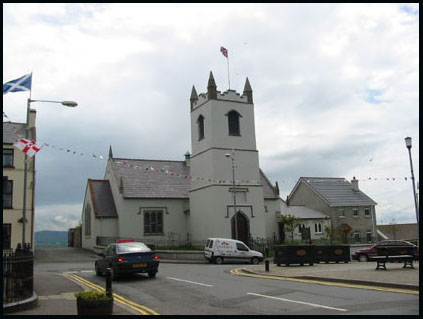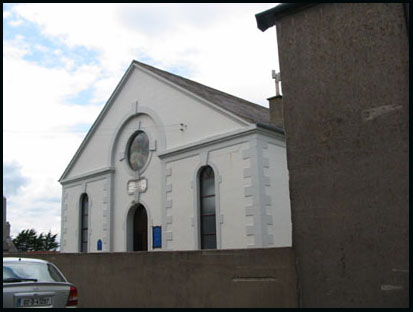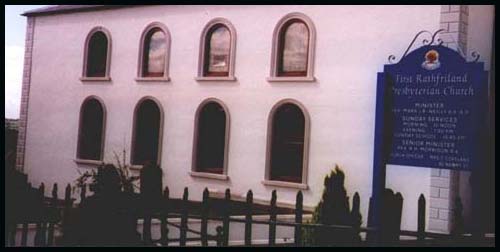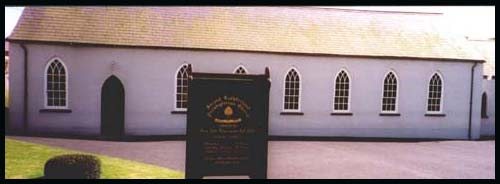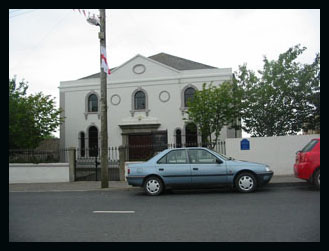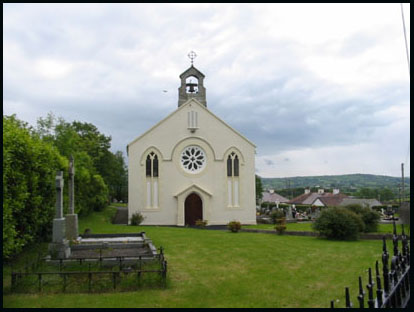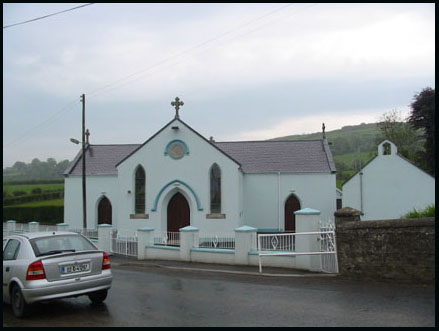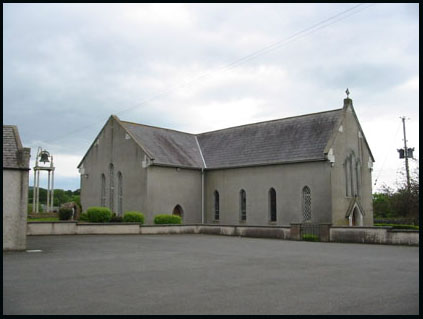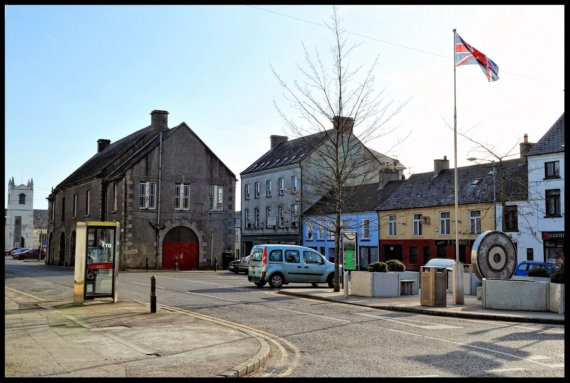|
Rathfriland
divided between Drumballyroney
& Drumgath parishes but mainly in Drumgath.
There
is a large water tower on the top of the hill which can be seen
from many kilometres around. The whole town sits on the top of
the hill.
Rathfriland was the capital
of the ruling Magennis family in ancient times. The ruins (south
gable 30ft x 25ft)of an old castle may still be seen on the hill
upon which Rathfriland is situated. It was a square building of
3-4 storeys with a stone barrel vault at the first floor level
to reduce the risk of fire and was one of the seats of the Magennis's,
Lords of Iveagh. This castle was formerly very large but most
of it was pulled down by Mr. William Hawkins of London , the first
Protestant proprietor here after the rebellion of 1641. It is
said to have been destroyed by General Ireton by Cromwell's orders.
The stones were used to build the Town Inn (still stands on corner
of The Square & Newry Street) and other houses in the town.
In 1760 the Market House, which dominates the main square, was
built for the linen market by Miss Theodosia McGill. . An old
map of 1776 prepared for the Meade Estate shows streets, lanes
, tenements and gardens forming the beginning town.
In the centre of town is the
main square which has many of the banks, the old market house
and 2 churches. The market was held once a month. In 1843, John
O'Donovan (renowned Gaelic scholar) wrote that the town had about
30 public houses and there was a high degree of drunkedness. He
was impressed by the beauty of the area and the friendliness of
the people. In 1846 the population of the town was 2183 people.
In 1870 there were 27 spirit and porter dealers in town also 4
blacksmiths , 4 saddlers & 4 surgeons and apothecaries (POD)
|
